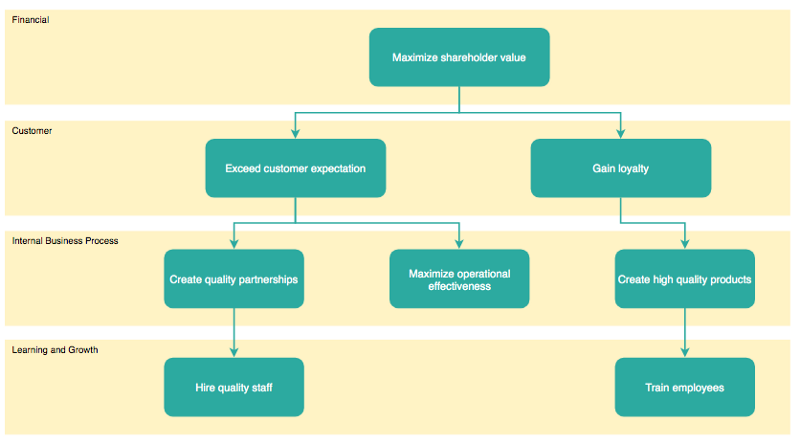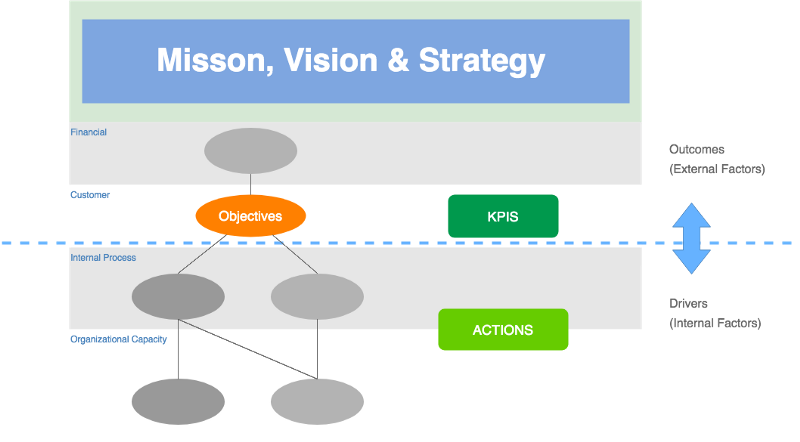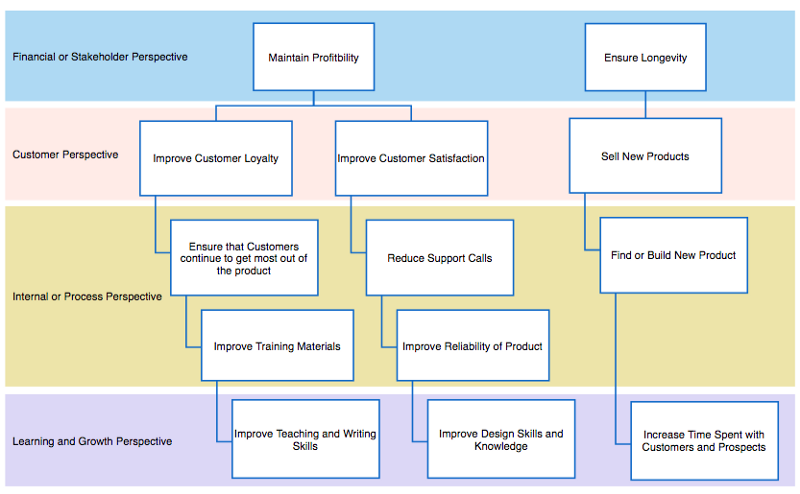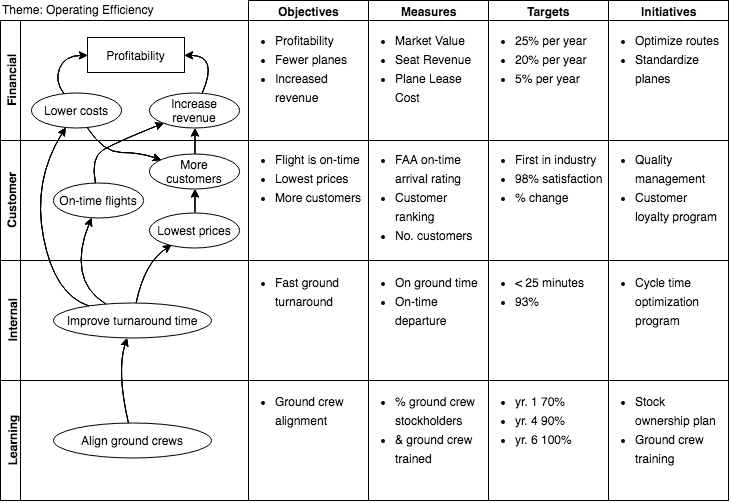A strategy map developed by Robert S. Kaplan and David P. Norton as part of their Balanced Scorecard framework for strategic planning and management. A strategy map is a visual representation of a company’s overall objectives and how they relate to one another on a single page.
The Purpose of Strategy Map
With a well-designed strategy map, every employee can know your overall strategy and where they fit in. It helps keep everyone on the same page, and it allows people to see how their jobs affect the company’s strategic objectives. Your company can be benefited from Strategy Map which includes:
- It’s great for quickly communicating big-picture objectives to everyone in the company.
- It improves communication of the organization’s Vision and Strategy
- It help to identify and link together the critical internal processes, human resources, information that deliver the value proposition of the company
- It prioritizes action items in the implementation roadmap in tough economic times, if it is used together with balanced score card
The Structure of a Strategy Map
The original formulation of the strategy map is based on the ‘four perspectives: financial, customer, internal business process, and learning and growth:

(Edit the Above Strategy Map Online Instantly with Free Tool)
- It is an underlying framework of horizontal perspectives arranged in a cause and effect relationship, typically Financial, Customer, Process and Learning & Growth
- Objectives within those perspectives. Each objective as text appearing within a shape (usually an oval or rectangle). Relatively few objectives (usually fewer than 20)
- Vertical sets of linked objectives that span the perspectives. These are called strategic themes.
- Clear cause-and-effect relationships between these objectives, across the perspectives.
- The strategic themes represent hypotheses about how the strategy will bring about change to the outcomes of the organization.
Internal Perspectives vs External Perspectives of Strategy Map
Outcome ( external ) perspectives: (financial and customer perspectives) — They are developed in response to the basic question ‘What do we want to accomplish?’
Input (internal )perspectives: (internal and learning and growth perspectives) — They are the input perspectives — depict ‘How do we plan to accomplish it?’

How to Develop a Strategy Map?
Starting from the First perspective – Financial
- ‘What’ do we want to achieve?
- Maintain Profitability so,
In the second perspective – Customer
- ‘How’ are we going to do that?
- Improve Customer Satisfaction
Now, repeat the process in Internal Process perspective
- How are we going to do that?
- Reduce support calls
Repeat and so on….
When you are performing the mapping and associated a link between them through arrows, you will see a cause-and-effect relationship between those goals.

(Edit the Above Strategy Map Online Instantly with Visual Paradigm Online)
Combining Strategy Map with the Power of Balanced Scoredcard
Strategy maps also serve as an appropriate basis for the development of financial and non-financial Balanced Scorecard measures that can be used to monitor strategy execution and performance. As a Strategy Map does not contain measures, it contains objectives. Of cause, we can combine the power of both tools by using a strategy map as a part of the Balanced Scorecard.
Strategy maps provide the means of linking the objectives to the balanced scorecard which provides a roadmap giving direction and linking the performance indicators and initiatives to the strategy of the company. As shown in the diagram above for each perspective, there is a set of objectives. Measures within the scorecard framework are aligned to the objectives and targets set. An action plan is linked to the objectives and along with an associated budget.
We can place your measures on the strategy map, alongside the objectives they correspond with:

(Edit the Above Strategy Map Online Instantly with Visual Paradigm Online)
Summary
A clear direction is necessary for everyone to know what they are working on and what goals to accomplish to increase their productivity. When you have identify your strategic objectives or goals on a strategy map and associated a link between them through arrows, you will see a cause-and-effect relationship between those goals. At that point, you can gauge the importance of one goal in attaining the other goals. This will help you in devising your action plan, and consequently developing your overall strategy according to your organization’s targets. You will also be able to monitor and control the implementation of your strategy.
References
- Strategy map — from Wikipedia

